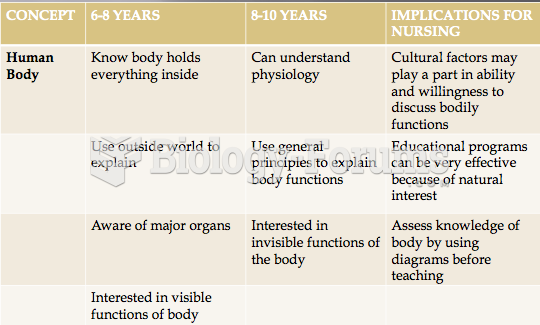Answer to Question 1
Answer: 3
Explanation: 3. The childless family is an adult couple who have never had children or who live apart from children. A nuclear family is an adult couple with biological or adopted children. An extended family involves two or more adults from different generations living in the same household. Blended families, or stepfamilies, are composed of a heterosexual or same-sex couple, one or both of whom have been involved in a prior relationship, and children from the prior relationship(s).
Answer to Question 2
Answer: 1, 2, 3, 4
Explanation: 1. When terminating a client from home visits the nurse should plan for termination from the first visit, inform the client of the time-limited nature of services and their probable duration, review goal accomplishment with the client, and make referrals for continuing care, if needed. Engaging in mutual goal setting with client to meet identified needs is an action completed during the implementation of home visits.
2. When terminating a client from home visits the nurse should plan for termination from the first visit, inform the client of the time-limited nature of services and their probable duration, review goal accomplishment with the client, and make referrals for continuing care, if needed. Engaging in mutual goal setting with client to meet identified needs is an action completed during the implementation of home visits.
3. When terminating a client from home visits the nurse should plan for termination from the first visit, inform the client of the time-limited nature of services and their probable duration, review goal accomplishment with the client, and make referrals for continuing care, if needed. Engaging in mutual goal setting with client to meet identified needs is an action completed during the implementation of home visits.
4. When terminating a client from home visits the nurse should plan for termination from the first visit, inform the client of the time-limited nature of services and their probable duration, review goal accomplishment with the client, and make referrals for continuing care, if needed. Engaging in mutual goal setting with client to meet identified needs is an action completed during the implementation of home visits.
 This young boy with muscular dystrophy needs to receive tube feedings and home nursing care. He atte
This young boy with muscular dystrophy needs to receive tube feedings and home nursing care. He atte
 It is difficult to capture the anguish of the children of divorce, but when I read these lines by ...
It is difficult to capture the anguish of the children of divorce, but when I read these lines by ...





